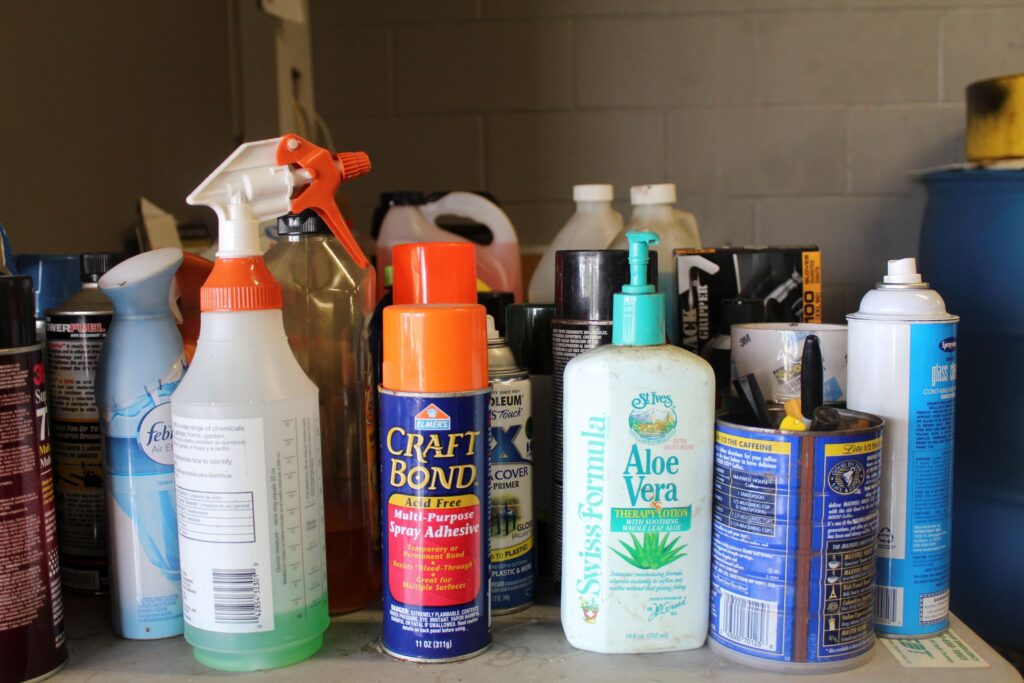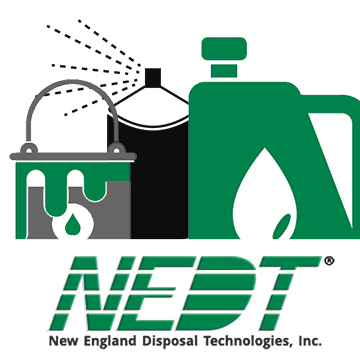Everyone likes arts and crafts, from Elmer’s glue and popsicle sticks to peak-preforming hobbyist paints and glazes. But many of these products, especially old ones, can contain hazardous chemicals that need to be handled during use, storage, and disposal. Today, let’s look at using, storing, and disposing of arts and crafts materials and how reading the labels and taking appropriate precautions is vital to keeping this hoppy fun – especially with old arts and crafts supplies.
Identifying Hazardous Arts and Crafts Products
It’s important to know what’s in the household products you’re using, thankfully (most) products have information labels that include information on hazardous contents, safe handling and use instructions, and disposal methods. As mentioned in our What to Do to Have Fewer Hazardous Products at Home blog, these include:
- Precautionary and Caution Statements: These inform who these products are hazardous to, what health conditions they can cause, and how to avoid and treat them.
- Pictograms: Many products that contain hazardous products like chemicals also include pictograms that quickly state the hazards. See the OSHA QuickCard™ page for details.
- Storage and Disposal Statements: Many products are at their most dangerous when stored or disposed of improperly. Also, read disposal instructions before heading to the trashcan or drain.
If you can’t find this information on the supplies, ask the vendor for a Material Safety Data Sheet or hotline for the product. Check our Fact Sheets page for more information!
Handling and Storing Arts and Crafts Products
Handling and storing these supplies depend on what warnings and contents they have. For example, just like with oil paints and stains, oil or solvent-based products may produce harmful vapors when used and those same issues can make it a fire hazard during storage. Some may require gloves or masks when in use. Cleaning up can also be an issue: liquids should be absorbed with rags or kitty litter before disposal and avoid creating dust by using a wet sanding or a vacuum while in use. If you’re starting a new hobby, make sure to consult with professionals on what safety equipment you might need.
How to Dispose of Arts and Crafts Supplies
The disposal of arts and crafts supplies should follow three stages. Assuming it’s safe for use, start by seeing if anyone else can use it (this blog is a good place to start). At-home disposal depends on the contents. For example, if it contains heavy metals, it’s not allowed in the trash due to contamination. Other things like adhesives have more practical reasons they can’t make it in the trash. Learn more about other options here, such as donations or government facilities.
Another great option for New Englanders is NEDT’s Household Hazardous Products Collection Centers! We can help by providing quick and safe service for all your needs, including a pick up service that offers contact-free pickup! Contact us today to learn more, including what to bring in. You can also call us at 866-769-1621.



Leave a Reply